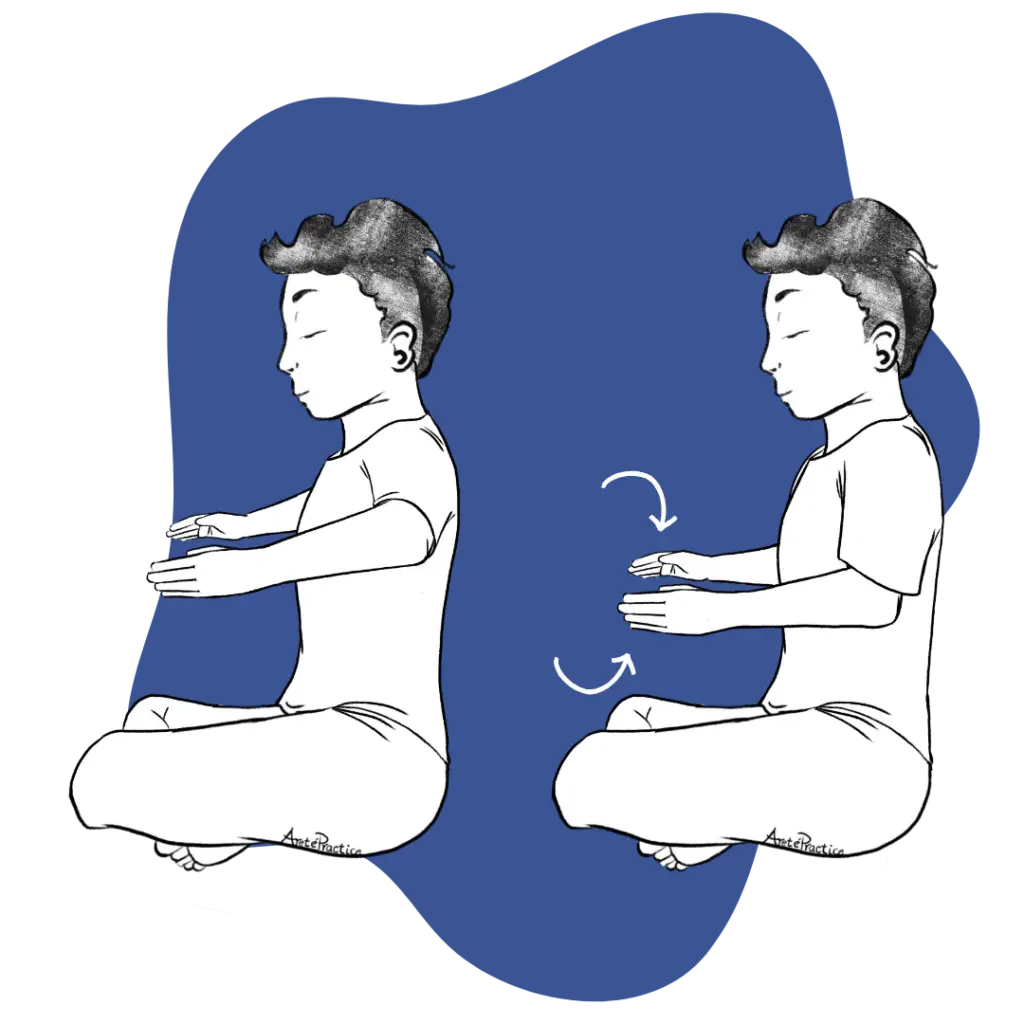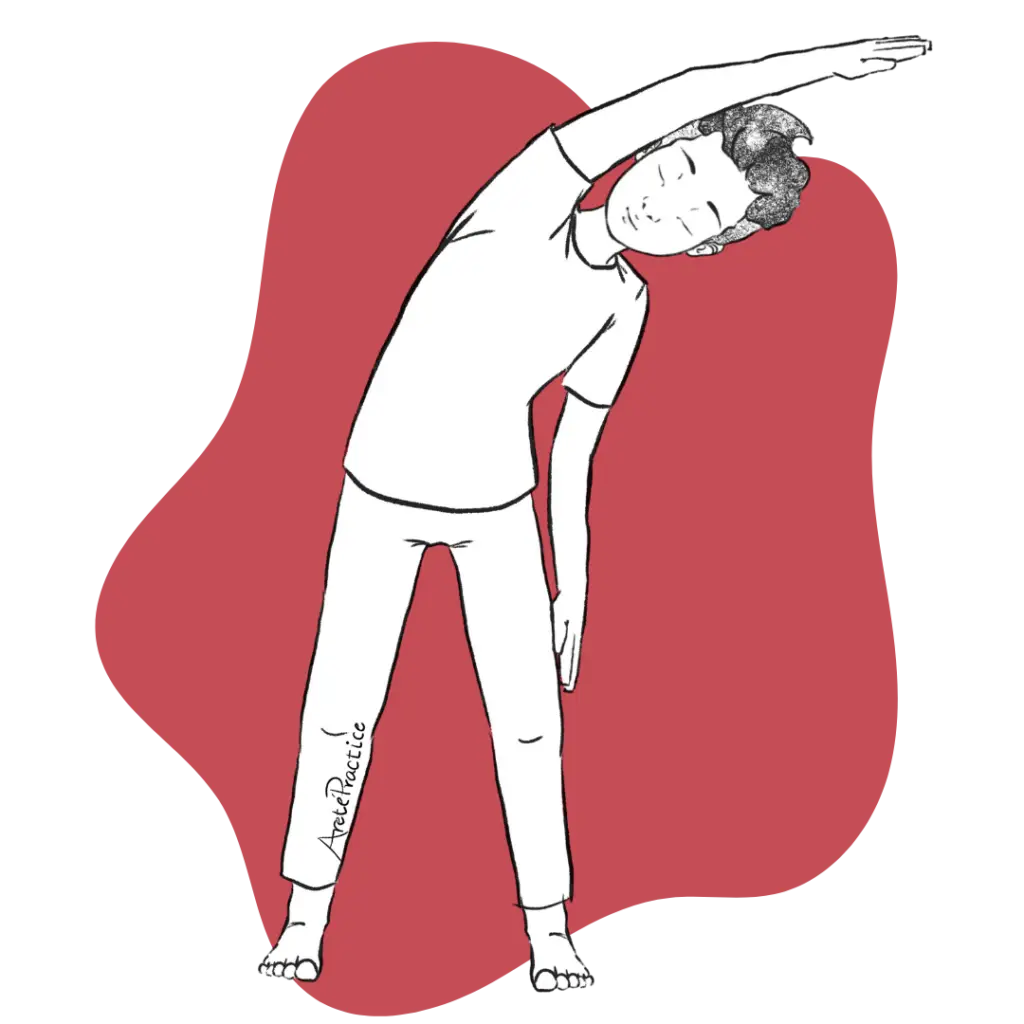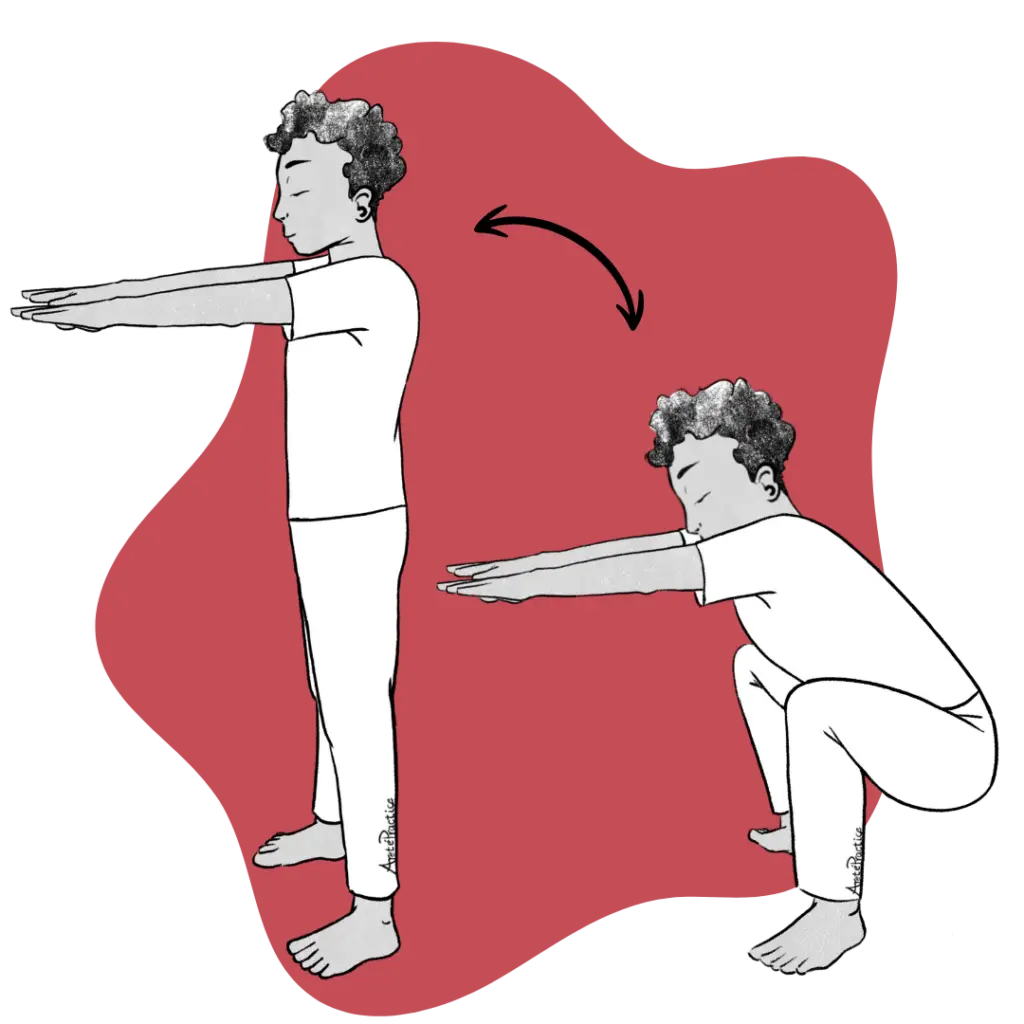Muladhara: Root Chakra
“All foundations rest upon the Earth – the universal ground for all that we do. To connect with the body is to connect with the Earth, to be grounded in the biological reality of existence. … We must have soil firm enough to provide stability yet yielding enough to be penetrated by roots. The anchoring of this temple digs deep into the earth, for its Sanskrit name, Muladhara, means ‘root support’.”
Anodea Judith in Eastern Body, Western Mind

Location
Tailbone, base of the spine

Color
Red

Element
Earth

Organ
Adrenal glands, colon, kidneys, bladder, and the skeletal structure, including bones and muscles

Bij Mantra
“Lam” (pronounced “lung” or “luhm”)
The First Chakra, or Root Chakra (Muladhara Chakra), is the foundation of the entire chakra system. Located at the base of the spine, it is associated with the physical body’s structure, including the bones, the feet, the legs, and the organs of elimination. Representing the element of Earth, this chakra connects us to the tangible, sensory, and survival features of life. It anchors us to the physical realm, supported by our survival instincts, habits, and primal needs, and provides a home for the unconscious mind.
The First Chakra is also considered to be the seat of Apana, the downward-moving vayu in yogic philosophy. This vayu governs the principles of elimination and release, helping to clear out physical waste, stagnant energy, unwanted thoughts, conflicting emotions, and self-limiting beliefs. As such, Apana supports the body’s natural processes of eliminating toxins and waste.
The First Chakra is considered the “ground of being” because it forms the foundation for our physical, psychological, and spiritual experiences. It governs our survival, stability, and primal connection to life. The stability and balance of Muladhara are vital for the alignment and integration of the higher chakras, just as strong tree roots support a tall tree. When Muladhara is balanced, it provides a sense of safety, stability, and belonging, essential for physical, emotional, and spiritual well-being. It empowers us to engage with life experiences with confidence and presence fully.
Muladhara is related to interoception (perception of the body’s internal physiological state) and proprioception (perception of the body’s position and motion). As such, it allows us to tune into our body’s rhythms, maintain physical stability, and sense the messages from our body. This allows for grounded awareness from which we can explore higher states of consciousness without falling into delusion.
When Muladhara is out of balance, it is either dominant or suppressed. A suppressed Muladhara can lead to feelings of shame, insecurity, and ungroundedness, overwhelming us and making it difficult to trust ourselves, others, or the world around us. On the other hand, a dominant Muladhara can manifest as excessive neediness, attachment to material possessions, controlling behaviors, or rigid thinking. Both imbalances can have physical consequences, such as irregular digestion, constipation, fatigue, lower back pain, or leg and foot issues.
In essence, the Root Chakra is both our anchor and our gateway. It is the foundation upon which we build a life rooted in the stability and safety we need to connect to the deeper dimensions of ourselves.
Dimensions of Muladhara Chakra:
![]()
Meaning
Muladhara comes from Sanskrit, where mula means root and adhara means support or foundation. Together, Muladhara translates as root support, reflecting its role as the energetic base of the chakra system. Just as roots anchor a tree and draw nourishment from the soil, Muladhara anchors us in the present moment and supports the strength and balance of our entire energetic system.
![]()
Agency
This chakra forms the foundation of our sense of agency, or capacity to act. It fuels the instinctual responses necessary for survival, such as addressing our physiological needs or activating the fight-flight or freeze responses. As the root of our experience, it allows us to engage with life’s challenges through grounded instincts and feelings. At a higher level, agency in the First Chakra evolves into a grounded and balanced presence, cultivating stability, responsibility, and a conscious dedication to nurturing our well-being.
![]()
Identity
The first chakra also reflects the foundational needs of the ego. At this level, the ego is focused on survival, safety, and stability, shaped by our early experiences around the fulfillment of basic needs. Muladhara gives rise to our most elemental sense of self—our instinct to exist, to belong, and to protect ourselves. It marks the beginning of the “me” in relation to “others,” forming the root of how we experience individuality within the physical world.
When balanced, Muladhara fosters a stable sense of self, emotional resilience, and a deep confidence in one’s inherent right to exist. It provides an inner foundation that supports trust in life and the ability to navigate challenges with grounded strength. When imbalanced, however, one’s identity may become shaped by fear, insecurity, or an excessive attachment to external sources of safety—such as possessions, routines, or relationships—leading to instability, anxiety, or a constant need for control.
![]()
Community
The need for connection and belonging is deeply rooted in the First Chakra. Because Muladhara governs our sense of safety and security, early experiences of abandonment, neglect, or abuse can create deep imbalances in this energy center. When we are disconnected from the grounding presence of nurturing relationships—especially in childhood—we may grow up feeling isolated, overly self-reliant, or emotionally disconnected. This can lead to hoarding resources, clinging to superficial affiliations, or conforming as a way to feel safe and part of something.
Balancing and Healing Muladhara:

The First Chakra, Muladhara, is governed by core dualities such as safety vs. fear, stability vs. survival anxiety, and attachment vs. letting go. These polarities influence our experience of the physical world, connection to the body, and sense of belonging.
Balancing and healing Muladhara means becoming more aware of these opposing forces and allowing them to inform and support one another. Fear, for example, can be recognized without the need to suppress it or control it since it may point to the need to attend to what is out of balance or could be dangerous. Stability and change can coexist when we cultivate inner resilience rather than relying on rigid outer structures. Healing the Root Chakra involves restoring trust in ourselves and others, reconnecting to supportive environments and relationships, and finding a community that nurtures a true sense of belonging.
When balanced, Muladhara brings a profound sense of safety, groundedness, and calm. You feel at home in your body, connected to the earth and others, and can meet life’s basic needs with quiet confidence. With emotional resilience and steady energy, daily responsibilities feel manageable. At its core, a harmonized root chakra affirms: “I am here, and I am safe.”
Recommended Practices for Manipura:
![]()
Life Practices
- Attending to basic needs, such as nourishing food, a safe and supportive home, and financial security lay the essential groundwork for a balanced Muladhara chakra. These practical aspects of daily life provide the physical and emotional stability needed to feel grounded, safe, and supported from within.
- Spending time in nature, walking barefoot, gardening, or simply observing the natural rhythms around you—helps strengthen your connection to the physical world. These grounding practices reinforce your embodied experience, calm the nervous system, help harmonize Mulahadara, and support a balanced, rooted state of being.
- Creating consistent habits like regular sleep, mealtimes, or mindful rituals such as drinking tea establishes a grounding base for daily life. These simple yet intentional practices reinforce a sense of predictability and security that support harmony in the Root Chakra.
- Physical practices are essential to balance Muladhara. Strength-building exercises, long walks, and grounding yoga poses that engage the legs, feet, and pelvis—such as Mountain Pose (Tadasana), Crow Pose (Upaveshasana), and Archer Pose (Virabhadrasana Variation) help anchor you in your body and the present moment.
- Root vegetables like carrots, potatoes, and beets, along with protein-rich foods and warm, hearty meals, help stabilize your energy and deepen your connection to the Earth. These foods nourish the body’s foundation and promote a sense of comfort, strength, and support from within.
- Cultivate grounded awareness in the First Chakra by focusing on the sensations of the body, which anchors the mind in physical perception, the state from which all other forms of awareness arise.
![]()
Affirmations for the First Chakra:
- It is safe for me to be here.
- The Earth supports me and meets my needs.
- I love my body and trust its wisdom.
- I am immersed in abundance.
- I’m here, and I’m real.
![]()
Questions for Reflection:
- Am I balanced in my first chakra? Do I tend to overvalue or undervalue my physical form?
- Am I effective in meeting my physical needs? How do I differentiate between my needs and wants? What else might I need to nourish myself?
- How grounded am I right now? In what ways do I seek stability in my life, and do they truly fulfill me?
- How connected do I feel to the earth and my community? Do I have effective boundaries, or am I too porous or too rigid?
- What do I need in my life, additionally, to feel secure?
- What patterns or habits do I notice when I feel insecure or fearful?
![]()
Kundalini Yoga Practices
General Kundalini Yoga Practices:
- Mantras: Bij mantras resonate with the Muladhara, reinforcing stability and strengthening Muladhara’s energy.
- Mulabandha (Root Lock): Engaging the pelvic floor muscles activates Muladhara and directs energy upward.
- Pranayama (Breathwork): Deep belly breathing (diaphragmatic breathing) promotes grounding, while rhythmic, steady breathwork harmonizes energy flow.
Kundalini Yoga Kriya and Meditations:

Sat Kriya
This is an excellent Kundalini practice for stimulating and balancing the Root Chakra. It enhances the energy flow through the First Chakra and supports elimination.
Meditation for the First Chakra
This is a practice to activate and strengthen your First Chakra. It promotes grounding and feelings of security and stability as it tones your pelvic floor muscles.
Healthy Bowel System
This kriya is grounding, because it is done in a standing position, ideally with the heels pressed firmly into the ground; it also works the digestive system, or your ability to assimilate nourishment and release what you do not need.
Foundation for Infinity
A kriya to prepare a strong physical ground in the lower triangle for reaching toward experiences of the infinite.


